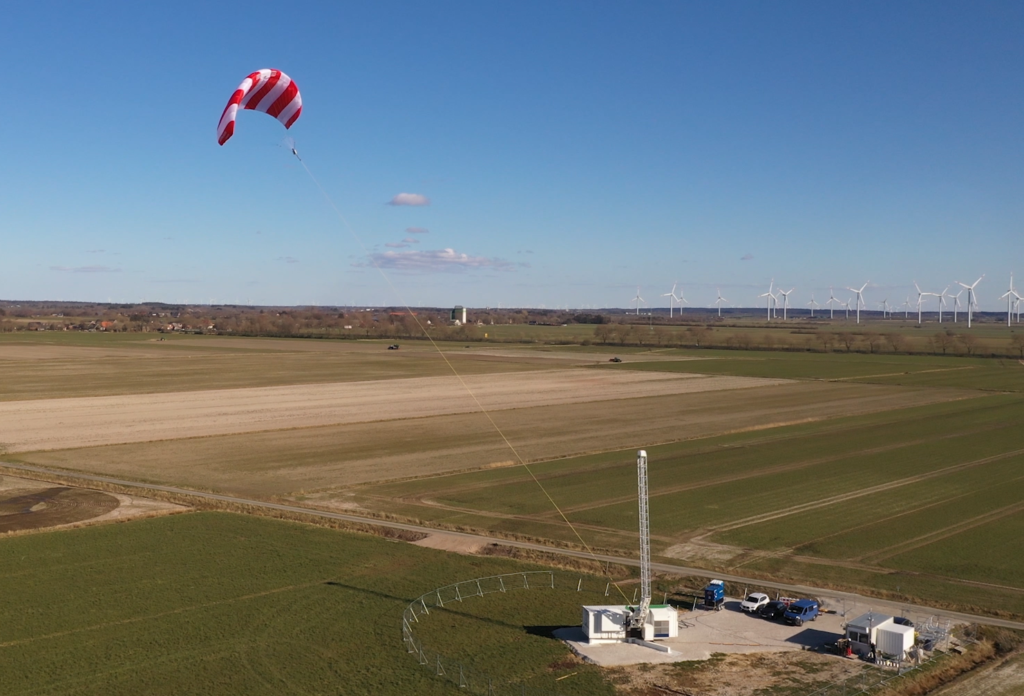Airborne wind energy is an emerging renewable energy technology that harvests higher-altitude winds (300–600 m above the ground) with automatically controlled kites. Like other renewables, airborne wind energy will impact people and nature. These impacts will shape the social acceptance of the technology and influence its large-scale deployment.
If the industry ignores people’s concerns about the technology and the public starts showing resistance to airborne wind energy, it could increase implementation costs, decrease political support for airborne wind energy, and minimize the industry’s contribution to meeting renewable energy targets. Other low-carbon energy projects, such as wind turbines, carbon capture and storage facilities, and biomass power plants, have been slowed down and even hindered in the past due to strong negative responses from the public. Therefore, it is important to understand how people perceive and respond to this new technology. In my PhD, I am investigating the social acceptance of airborne wind energy.
Before conducting empirical studies, I first wanted to get an overview of what is currently known about the acceptance of airborne wind energy, so I did a systematic review of the existing literature. Of the 362 records that I identified, only 40 peer-reviewed publications turned out to be relevant. These publications discussed five major impacts of the technology on social acceptance: safety and related aspects, visibility, sound emissions, ecological impact, and the siting of airborne wind energy systems.
Most publications were authored by engineers (83% of authors), and none of the papers were written from a social science perspective. In total, 34 out of the 40 publications had mainly a technical and/or economic focus and mentioned the social acceptance of airborne wind energy only in passing. As a result, the literature’s claims about how the technology will influence people’s responses were only based on authors’ assumptions and not on scientific evidence, such as interviews, surveys, or experiments. I could not identify a single study that empirically assessed the social acceptance of airborne wind energy.
Furthermore, the review demonstrated that most researchers in the field seem to be quite optimistic about how the emerging technology will be perceived, especially given the current lack of empirical evidence. Specifically, the reviewed literature assumed that the expected low visual impact of airborne wind energy due to its high operational altitude, the absence of a tower, little shadow flicker, and the possibility of retrieving the kite in low wind conditions would influence the social acceptance of airborne wind energy positively. The expected low acoustic and ecological impacts were also assumed to impact people’s responses to the technology positively. The only anticipated acceptance issues were certain siting decisions (e.g., onshore rather than offshore developments, sites in densely populated regions) and potential public safety concerns about the technology (e.g., regarding aviation safety, currently lacking regulation and proof of reliability).
It can be concluded that currently the literature overlooks that the impact of technical aspects such as noise emissions on people’s responses to airborne wind energy will partially depend on the deployment context and people’s personal attributes. For example, locals’ evaluation of the decision-making process and distribution of benefits as (un)fair, their trust in the project planners, and their attitude towards the energy transition overall will likely influence how they experience and evaluate a local airborne wind energy development.
Thus, the findings from the literature review suggest that there is a need for empirical social science research on the acceptance of airborne wind energy, such as through surveys, interviews, focus groups, and lab or field experiments. My PhD project can, therefore, add new and relevant knowledge about the topic at hand.
If you are interested in reading the entire literature review, you can find it open access under https://www.mdpi.com/1996-1073/15/4/1384. For updates about my ongoing research you can follow me on ResearchGate: https://www.researchgate.net/profile/Helena-Schmidt-3.


